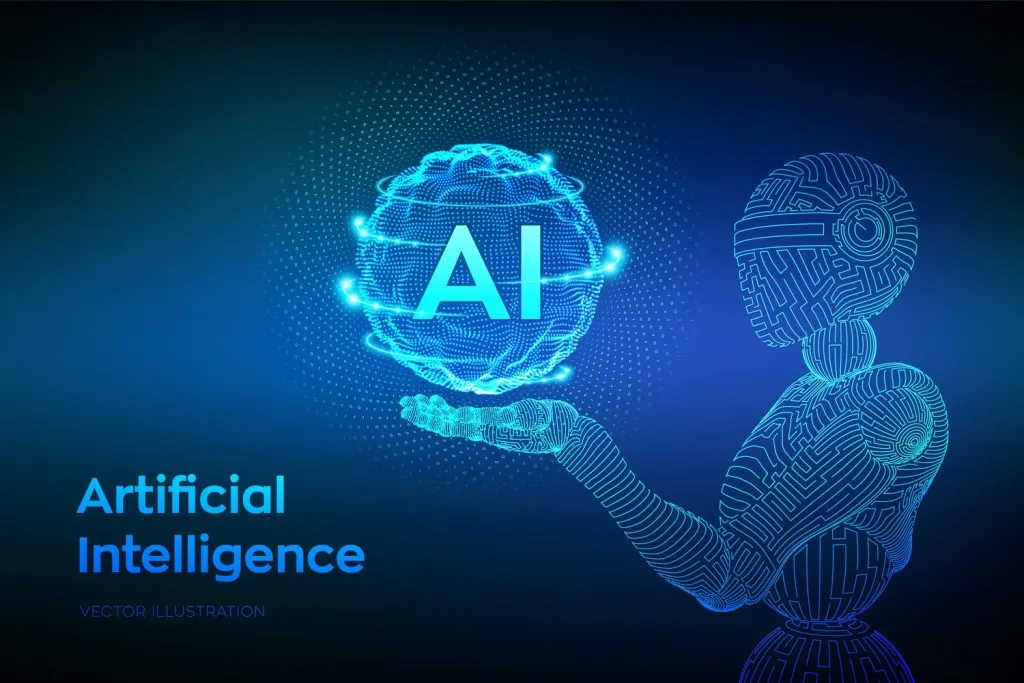
Transforming Industries: The Role of AI in Autonomous Robotics
In the ever-evolving landscape of technology, one of the most promising advancements is the integration of Artificial Intelligence (AI) into autonomous robotics.
Transforming Industries: The Role of AI in Autonomous Robotics
In the ever-evolving landscape of technology, one of the most promising advancements is the integration of Artificial Intelligence (AI) into autonomous robotics. This fusion is reshaping traditional industrial processes, revolutionizing automation, and paving the way for unprecedented efficiency and productivity. From manufacturing plants to warehouses, AI-powered autonomous robots are redefining how tasks are performed, unlocking new possibilities for businesses worldwide.
Heading: Leveraging Natural Language Generation in Autonomous Robotics
In the realm of autonomous robotics, the integration of natural language generation (NLG) is propelling innovation to new heights. NLG algorithms enable robots to communicate seamlessly with humans, enhancing collaboration and efficiency in industrial settings. By leveraging NLG, autonomous robots can provide real-time updates on task progress, report anomalies, and even engage in dialogue to clarify instructions or seek clarification. This capability not only improves human-robot interaction but also enhances overall operational transparency and productivity. With NLG, autonomous robots become more than just mechanical entities; they become intelligent partners capable of understanding and articulating complex information in a human-like manner, revolutionizing the way we perceive and interact with automation in the modern industrial landscape.
Heading: Collaborating with Expertise: Hiring an App Developer for Autonomous Robotics
In the realm of autonomous robotics, hire app developer becomes crucial for integrating cutting-edge technology seamlessly into industrial processes. App developers bring expertise in designing and implementing software solutions tailored to the specific needs of autonomous robots. With their skills in programming languages, algorithms, and user interface design, app developers play a pivotal role in enhancing the capabilities of autonomous robots. Whether it's developing custom algorithms for navigation, optimizing sensor integration, or creating intuitive user interfaces for human-robot interaction, hiring an app developer ensures that autonomous robotics systems operate efficiently and effectively. By collaborating with app developers, businesses can harness the full potential of autonomous robotics technology, driving innovation, and achieving transformative results in industrial automation.
Heading: Empowering Autonomous Robotics through Data Annotation Specialists
In the realm of autonomous robotics, data annotation specialist play a critical role in training and refining AI algorithms that power these intelligent systems. These specialists are skilled in labeling and annotating vast amounts of data, ensuring that autonomous robots can accurately perceive and interpret their surroundings. By meticulously annotating images, videos, and sensor data, data annotation specialists enable AI algorithms to learn and make informed decisions in real-world scenarios. Whether it's identifying objects, recognizing patterns, or understanding contextual cues, the expertise of data annotation specialists is instrumental in enhancing the capabilities of autonomous robotics systems. Collaborating with data annotation specialists ensures that autonomous robots have access to high-quality training data, paving the way for more accurate and reliable performance in industrial automation applications.

Understanding Autonomous Robotics:
Autonomous robotics refers to the development of robots equipped with AI capabilities that enable them to operate and make decisions independently, without human intervention. These robots are equipped with sensors, cameras, and advanced algorithms that allow them to perceive their environment, analyze data, and execute tasks with precision. Unlike traditional industrial robots programmed for repetitive tasks, autonomous robots possess the ability to adapt and learn from their surroundings, making them highly versatile and efficient.
Enhancing Efficiency in Manufacturing:
In the realm of manufacturing, AI-driven autonomous robotics are streamlining production processes like never before. These robots can handle complex assembly tasks, operate machinery, and perform quality control checks with unmatched speed and accuracy. By automating repetitive and labor-intensive tasks, businesses can significantly reduce production time, minimize errors, and optimize resource utilization. This not only enhances operational efficiency but also lowers production costs, ultimately leading to higher profitability.
Optimizing Warehouse Operations:
Another area where AI in autonomous robotics is making a significant impact is in warehouse operations. Traditionally, warehouse management involved manual labor for tasks such as inventory management, order fulfillment, and goods transportation. However, with the advent of AI-powered robots, these processes have been transformed. Autonomous robots equipped with navigation systems can efficiently navigate through warehouse environments, locate products, and transport them to designated areas. This not only speeds up order fulfillment but also reduces errors and minimizes the risk of accidents in busy warehouse environments.
Improving Safety Standards:
One of the key advantages of AI-driven autonomous robotics is their ability to enhance workplace safety. In industries where hazardous conditions or heavy machinery pose risks to human workers, autonomous robots can be deployed to perform tasks without putting human lives in danger. These robots are equipped with sensors that enable them to detect obstacles, avoid collisions, and navigate safely through dynamic environments. By taking on high-risk tasks, autonomous robots help prevent accidents and injuries, creating a safer work environment for employees.
Enabling Scalability and Flexibility:
The scalability and flexibility offered by AI-powered autonomous robotics are unparalleled. Unlike traditional automation systems that require extensive reprogramming to adapt to changing tasks or environments, autonomous robots can learn and adapt in real-time. This agility allows businesses to respond quickly to market demands, scale operations efficiently, and stay ahead of the competition. Whether it's adjusting production schedules, reconfiguring warehouse layouts, or accommodating new product variants, autonomous robots provide the flexibility needed to thrive in dynamic business environments.
Unlocking Innovation and Creativity:
AI in autonomous robotics is not just about automating existing processes; it's also about unlocking new possibilities and driving innovation. With advances in machine learning and AI algorithms, autonomous robots are becoming increasingly capable of complex decision-making and problem-solving. This opens up opportunities for businesses to explore novel applications and redefine industry standards. Whether it's developing robots for healthcare assistance, exploring space exploration, or revolutionizing agriculture, the potential for innovation in autonomous robotics is limitless.
Addressing Challenges and Concerns:
While the prospects of AI-driven autonomous robotics are exciting, they also raise important questions regarding job displacement, ethical considerations, and cybersecurity risks. As robots take on more tasks traditionally performed by humans, there is a legitimate concern about the impact on employment levels and the need for upskilling and reskilling initiatives. Additionally, ensuring the ethical use of AI in robotics and safeguarding against potential security threats are critical considerations that must be addressed through comprehensive regulatory frameworks and industry standards.
Looking Ahead:
As AI continues to advance and autonomous robotics technology matures, the future holds immense promise for industries across the globe. From automotive manufacturing to e-commerce fulfillment, the integration of AI-driven autonomous robots will continue to redefine automation, enhance productivity, and drive economic growth. By leveraging the power of AI, businesses can unlock new levels of efficiency, innovation, and competitiveness in the increasingly digitalized world of tomorrow.
Conclusion:
In conclusion, AI in autonomous robotics is reshaping industries and redefining the future of automation. By harnessing the capabilities of AI-powered robots, businesses can optimize operations, improve safety standards, and unlock new opportunities for innovation. However, addressing challenges such as job displacement, ethical considerations, and cybersecurity risks is essential to ensure the responsible deployment of autonomous robotics technology. As we embark on this transformative journey, collaboration between industry stakeholders, policymakers, and technologists will be key to realizing the full potential of AI in autonomous robotics and creating a future where man and machine work together harmoniously for the benefit of society.




